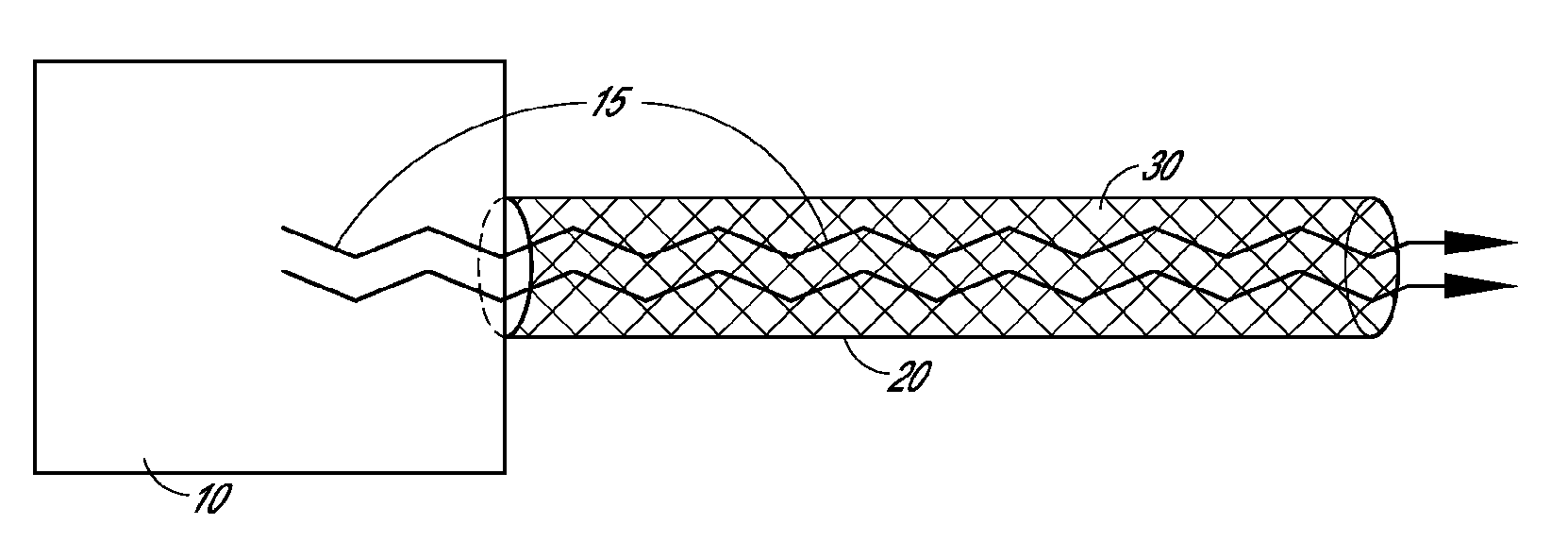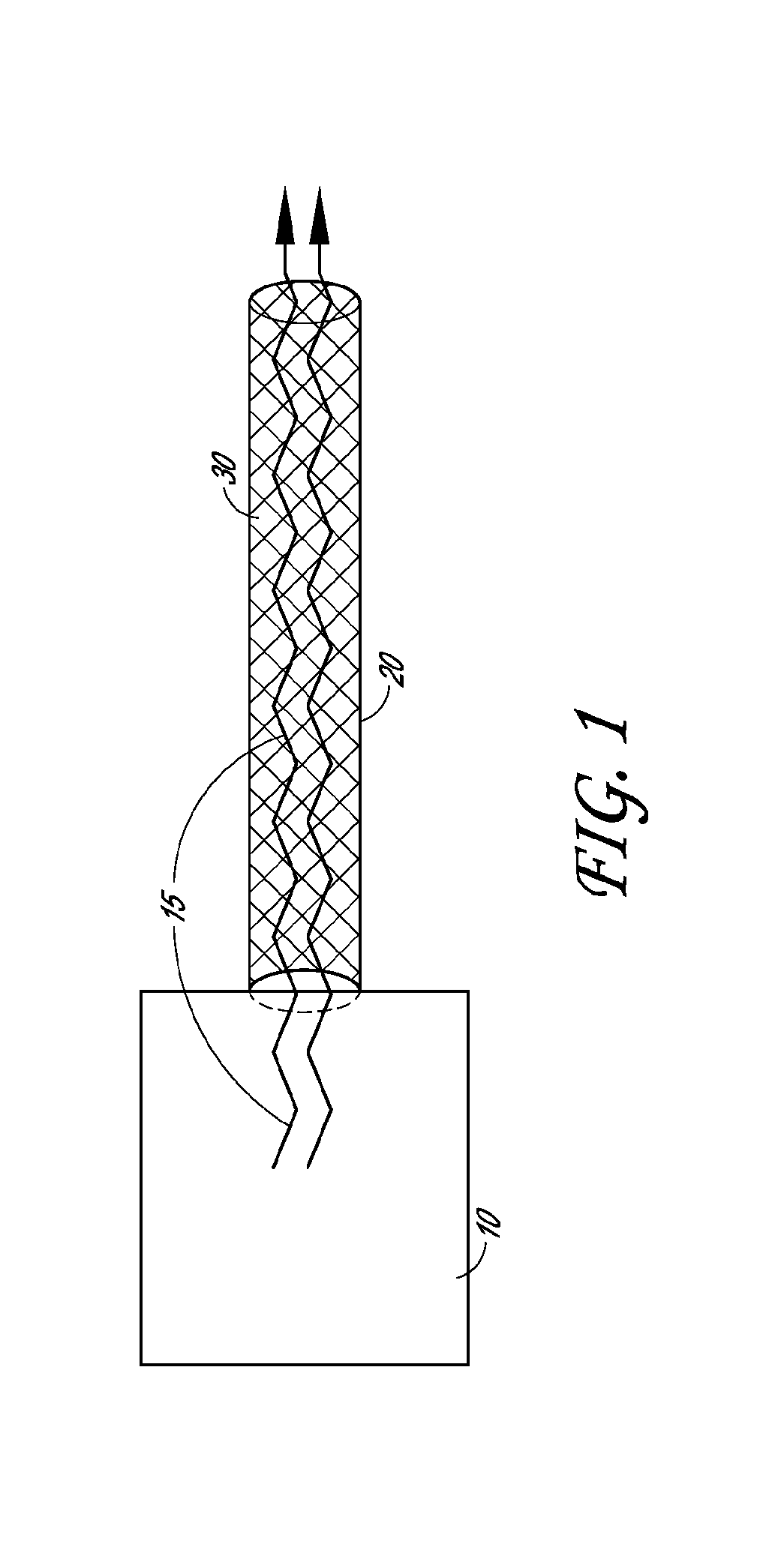Ionic liquids comprising heteraromatic anions
a technology of ionic liquids and anions, applied in the field of ionic liquids, can solve the problems of acidic gases, many ionic liquids may not be suitable for industrial removal, and the power consumption of cosub>2 /sub>from this stream may exceed 30%,
- Summary
- Abstract
- Description
- Claims
- Application Information
AI Technical Summary
Benefits of technology
Problems solved by technology
Method used
Image
Examples
example 1
Synthesis of Trihexyl(tetradecyl)phosphonium cyanopyrrolide, [P66614][2-CNpyr]
[0082]The synthesis of [P66614][2-CNpyr] is typical of a method that may be used to prepare many of the ionic liquids described herein. The phosphonium salt, [P66614][Br], is diluted with methanol (2M) and then transformed to [P66614][OH] by adding 2:1 molar equivalents of an anion exchange resin (e.g., DOWEX SBR LC NG (OH) ion exchange resin from Dow Chemical Company) in three batches, allowing 12 hrs in between. The resin is pretreated with 1:1 volume equivalent of methanol by rinsing 3 times at room temperature since the resin is unstable at temperatures above 60° C. During the ion exchange step, the mixture is stirred gently without a stir bar (which could deform the resin beads). After filtration to remove the resin, the [P66614] [OH] solution is mixed with a 1:1 molar equivalent of pyrrole-2-carbonitrile and stirred for 12 hrs. This produces the [P66614][2-CNpyr] and water. Excess methanol is removed...
example 2
[0083]Density functional theory (B3LYP / 6-311G++(d,p)) was used as an indicator of the reaction energy between carbon dioxide and the anion of the ionic liquid for different substituents. In these calculations, the structures and energies of the unreacted anion, reacted anion, and CO2 were combined to estimate the overall reaction energy (ΔE).
[0084]Table 1 shows representative results for an unsubstituted pyrrolide anion (e.g. the anion of pyrrole) and various monosubstituted pyrrolide anions. The calculated reaction energy for the parent pyrrolide is −99 kJ mol−1. While not limiting any embodiment, it is believed that electronegative substituents withdraw charge from the pyrrolide, decrease the anion-CO2 bond energy, and increase the reaction energy. For instance, placing fluorine in the R2 position (2-fluoropyrrolide) or R1 (1-fluoropyrrolide) positions increases the reaction energy to −89 and −46 kJ mol−1, respectively. As can be seen from the Table, other substituents (CN, CHxF3-...
example 3
[0089]The viscosity of control ionic liquids comprising glycinate or lysinate under 0 bar and 1 bar pressure of CO2 is plotted against temperature in FIG. 5. Like most amino acid based ionic liquids (e.g. those published previously in the literature), these ionic liquids exhibit a large increase in viscosity when the CO2 pressure is increased from 0 bar to 1 bar. While not limiting any embodiment, these large viscosity increases may make use of these ionic liquids to separate of CO2 from other gases or absorb CO2 more difficult in industrial processes.
PUM
| Property | Measurement | Unit |
|---|---|---|
| ionic | aaaaa | aaaaa |
| covalent | aaaaa | aaaaa |
| acidic | aaaaa | aaaaa |
Abstract
Description
Claims
Application Information
 Login to View More
Login to View More - R&D
- Intellectual Property
- Life Sciences
- Materials
- Tech Scout
- Unparalleled Data Quality
- Higher Quality Content
- 60% Fewer Hallucinations
Browse by: Latest US Patents, China's latest patents, Technical Efficacy Thesaurus, Application Domain, Technology Topic, Popular Technical Reports.
© 2025 PatSnap. All rights reserved.Legal|Privacy policy|Modern Slavery Act Transparency Statement|Sitemap|About US| Contact US: help@patsnap.com



